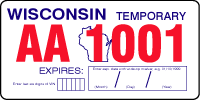History Of NMVTIS
The National Motor Vehicle Title Information System (NMVTIS) is an initiative from the federal government designed to keep stolen vehicles from being sold. Its main purpose is to prevent the reintroduction of stolen motor vehicles into the market.
- NMVTIS was instated to protect consumers from vehicular fraud and unsafe vehicles. It also serves as a tool for law enforcers to deter the sales of fraudulent titles and reduce the incidence of crimes involving the use of stolen automobiles.
- It serves as reliable electronic system that can be used as a tool by titling agencies to instantly verify the information on the title records with the data from the issuing state.
- The NMVTIS provides commercial and individual consumers with an accessible means to retrieve important vehicle history information such as title data, brand history, odometer reading, total loss history and salvage history.
1980s: Car Theft And Carjacking Was A Growing Problem
Car theft and fraud was a growing problem in the early and mid 1980s. Despite the enactment of the Motor Vehicle Theft Law Enforcement Act of 1984, car theft was still a major problem by the early 1990s.
- Before the 1990s, car-theft and auto fraud-related crimes still carried minor charges and lighter sentences. Investigators during the time had also believed that inscribing or affixing the Vehicular Identification Number (VIN) onto the engine, the transmission and 12 major body parts of the auto provided them with enough tool to detect, apprehend and prosecute car thieves.
- The parts marking allowed law enforcers to identify stolen vehicles or parts removed from stolen vehicles. It also served as a deterrent for professional car hustlers since it introduced a greater risk for capture and increased difficulty in reselling marked parts. Parts marking officially began in 1987.
- Despite this initiative, a survey in 1992 revealed that the reported incidence of car theft had only grown from 830,000 in 1984 to 1,270,000 in 1990.
- Increasing incidences of violent carjackings resulting in fatalities were also reported nationwide. In the aftermath of a series of carjacking incidences where several victims were murdered, the US Congress was called into action. Pressed to search for a stronger solution for the problem and in response to the Department of Transportation’s recommendations, the Congress passed the Anti Car-Theft Bill into law.
- It was the first federal carjacking law which criminalized the usage of firearms and force in stealing a motor vehicle.
-
Anti Car Theft Act (ACT) of 1992: A necessary Answer To The Growing Problem

After it was passed into a law by the Congress on October 1992, Title II of the Anti-Car Theft Act mandated the United States’ Department of Transportation to develop a national information system which would enable states and other stakeholders to gain access to automobile titling information by January 31, 1996. - The Act was primarily designed to tackle the increasing incidence rate of automobile-related robberies and criminal activities. It was enacted to decrease the trafficking of illegal and stolen vehicles and protect consumers from fraudulent vehicular titles.
- In order to fulfill its responsibilities, the DOT delegated the task to the National Highway Transportation Safety Administration (NHTSA) on April 25, 1993.
- The NHTSA, in turn, formed a task force known as Motor Vehicle Titling, Registration and Salvage Advisory Committee to spearhead the development of NMVTIS.
- On February 1994, the task force, which involved affected industries, recommended the following:
-
(1) Passage of federal legislation requiring uniform definitions of salvage vehicles
(2) funding sources for the titling system (3) penalties to enforce compliance. - The Department of Transportation accepted most of the recommendations and sent the proposed legislation to Congress with the request of extending the deadline for the implementation of the NMVTIS to October 1997. The extension request was made under the grounds of conducting a pilot run for the program.Around the same period of time, the American Association of Motor Vehicle Administrators (AAMVA) was also appointed as NMVTIS’ system operator.
- In order to facilitate the development of the NMVTIS, the AAMVA requested funding for a pilot study from the NHTSA. Unfortunately, this request was denied despite the $890,000 congressional appropriation.
The Development Stage Of NMVTIS
On November 29, 1995, then-New York Representative Chuck Schumer, who was a member of the House Judiciary Committee at the time, called for the General Accounting Office (GAO) to evaluate the implementation status of NMVTIS. In order to send the progress of NMVTIS further forward, the House Resolution 2803 (Anti-Car Theft Improvements Act) was introduced on December 1995. - This allowed the transfer of the jurisdiction over NMVTIS from the Department of Transportation to the Department of Justice.
- It also granted the original deadline extension request made by the DOT and provided immunity to participants (e.g. systems operators, insurers and salvagers) who make good faith efforts to comply with the law. GAO was finally able to comply to Rep. Schumer’s request on April 22, 1996 and published the report entitled “Anti-Car Theft Act: Implementation Status of Certain Provisions of the 1992 Act”.
- The report elaborated that both DOT and DOJ failed in developing the NMVTIS within the deadlines provided and recommended for certain measures to be taken.
-
NMVTIS Funding Approved
On July 23, 1998, Senator John Ashcroft, who was then the Chairman of the Subcommittee on Consumer Affairs of the Senate Commerce Committee, expressed concerns over the NMVTIS.After meeting with Carfax, Sen. Ashcroft called the system a “Washington boondogle” and requested GAO for a comprehensive report on the implementation status and projected costs and benefits of NMVTIS to ensure that additional government investments are justified. - GAO responded on August 13, 1999 and issued the report entitled “Anti-Car Theft Act: Issues Concerning Additional Federal Funding of Vehicle Title Information System” which concluded that the Department of Justice has not performed a cost-benefit evaluation for NMVTIS and that such an analysis must be conducted.
- It was only in 2001 that the Justice Department evaluated NMVTIS, through its own cost-benefit analysis, and declared the system as a profitable investment for federal funds.
- The 1999 GAO report also included AAMVA’s projected estimate of $34 Million which will cover the development and implementation of the system.
- The AAMVA was able to report in 2000 that the vehicle title information system it developed is capable of fulfilling the requirements set by the ACTA. However, the association identified funding as the main barrier for the implementation of the program across all states.
- It also noted that the participation of junk yards and car insurance companies in reporting car fraud incidences was significantly hindered by the Justice Department’s failure to issue the regulations required by the Act.
-
The Present:
Coverage and Impact of the NMVTIS
The NMVTIS provides a means of verifying whether or not a title is valid. It also provides the information of the vehicle’s reported mileage, where a vehicle bearing a known VIN is currently titled and whether the vehicle is currently reported as junk or salvage.Currently, all states and jurisdictions are required to participate in reporting to the NMVTIS.
- The NMVTIS contains the following information:
-
(1) State of title
(2) Title number
(3) Title Issue Date
(4) Previous VIN
(5) Odometer
(6) Vehicle brand.
- The system does not include data on owner information and any other DPPA information. It covers motor vehicles only (e.g. trucks, cars, mopeds, motorcycles and buses) and does not include trailers/semis, golf carts, ATVs and off-highway machineries. Currently, a substantial increase in the number of participating states has been been observed.
- Right now 96% of the US Department of Motor Vehicle Data is represented in the system. There are 6 states that is in development along with the District of Columbia and it will be soon until the remaining states are included.
-


















